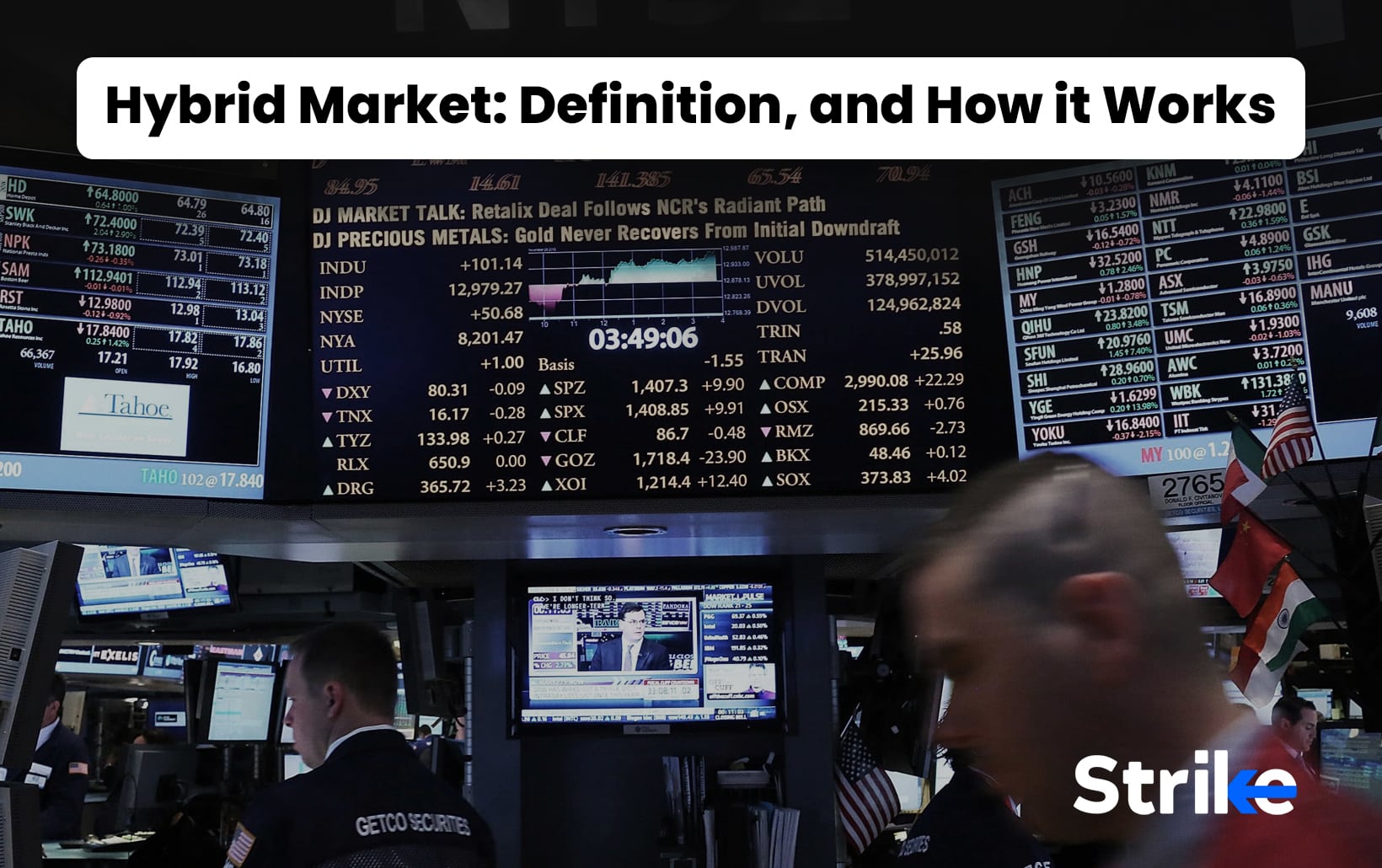
A Hybrid Market is a security exchange that combines the features of both an electronic trading system and a traditional floor-based trading. Hybrid Market lets traders choose to trade electronically or through face-to-face interaction on the trading floor.
The New York Stock Exchange (NYSE) is an example of a hybrid market. The NYSE provides investors with the opportunity to buy and sell stocks through the use of electronic trading platforms along with physical trading floor where investors transact face-to-face.
Traders benefit from a Hybrid Market since it gives them the advantages of both traditional and electronic markets. They have the ability to make use of the speed and convenience offered by electronic trading, as well as the choice to make use of the personal touch that is offered by traditional trading.
Traders favour hybrid markets because they enable them to modify their trading strategies and preferences to the market environment. Some traders favour the convenience and effectiveness of electronic trading, while others lean more towards the human element that comes with face-to-face engagement.
Why do Hybrid Markets use Floor and Electronic Trading together?
Hybrid Markets use floor trading with electronic trading in order to provide traders with the benefits that are gained from either trading approach. Floor trading is a kind of trading in which buyers and sellers of securities meet face-to-face on a trading floor. Traders are able to immediately contact one another and negotiate rates as the conversation is happening in real time.
Specifically during erratic market situations, floor trading provides a physical forum where traders engage by shouting and utilising hand gestures known as open outcry to make contracts. Electronic trading entails purchasing and selling assets using a digital platform. Floor trading is more time-consuming and less efficient than electronic trading systems, which allows traders to execute deals with the touch of a button.
Traders in a Hybrid Market are allowed to trade in the manner that best suits their tastes and trading techniques thanks to the combination of the two trading approaches. Traders who favour the personal touch and negotiation aspect of floor trading have the option to do so, while traders who prefer the speed and efficiency of computerised trading also have the option to participate.
Hybrid Markets are better able to handle substantial trading volumes than traditional floor-only exchanges. The electronic trading system is able to handle the majority of the trades, relieving the burden that is placed on the floor traders when there is an increase in the amount of trading activity.
Which exchanges do use Floor and Electronic Trading at the same time?
New York Stock Exchange (NYSE), The Chicago Mercantile Exchange (CME) and, The London Metal Exchange (LME) are the three exchanges located that use both floor trading and electronic trading concurrently .
The NYSE , one of the major stock exchanges in the world has been operating as hybrid exchange since 2006. Most of the trades on the exchange are conducted through electronic trading. However, the exchange does have a trading floor where traders can buy and sell securities in person. According to the NYSE’s official website, in 2005 they launched the NYSE Hybrid Market, which created a blend of floor-based auction and electronic trading.
This “high tech, high touch” model combined the benefits of traditional open-outcry trading with new digital capabilities. Major advances in areas like market data displays and mobile technologies then led to the open outcry system being phased out on the trading floor in 2006. That year, the NYSE merged with Arca Exchanges, the first all-electronic exchange in the U.S. This marked the transition to fully electronic trading of stocks and options, transforming the NYSE model to fit modern market structures.
CME is a derivatives exchange that gives customers access to various products, such as futures and options contracts. The exchange uses a hybrid market model, in which the vast majority of its trades are carried out digitally. But it also has a trading floor where buyers and sellers meet in person to negotiate prices for particular goods. According to CME Group, on May 22, 2012, they announced the launch of CME Direct, a new technology offering that allowed side-by-side trading of exchange-listed and over-the-counter (OTC) markets. CME Direct, as CME Group states, initially supported trading of CME Group’s benchmark energy futures markets alongside OTC energy swaps through leading inter-dealer brokers.
LME is the world’s most important and largest metal market. LME provides futures and options contracts for a wide range of metals. The exchange operates under a Hybrid Market model, meaning that most of its trades are conducted electronically. The exchange does have a trading floor where participants negotiate prices for contracts. According to Reuters, LME reopened its historic trading ring on September 6th, 2021, opting to retain open outcry trading for official pricing while shifting to electronic systems for closing transactions. As the exchange had announced in June, it decided against proposals to permanently close the trading floor, the last open-outcry venue in Europe
Hybrid Markets are subject to the same restrictions in terms of market manipulation, insider trading, and transparency as other exchanges. These regulations apply to Hybrid Markets in the same way that they apply to other exchanges. The specific laws differ depending on the country and the exchange, but their overarching purpose is to ensure that all participants can engage in trading that is both fair and orderly.
What is the Advantage of using Floor Trading?
The main advantage of using floor trading is the use of human judement while trading face to face. Below are five main benefits that electronic trading does not have. Personal engagement: Floor trading enables traders to interact with one another face-to-face, which is very advantageous when negotiating prices. This type of interaction is possible because of a physical floor. Traders are able to read the sentiment of the market and negotiate better agreements by using non-verbal clues and by paying attention to their body language.
Information flow
Traders in a floor trading environment have access to real-time information regarding market conditions and are able to react swiftly to shifting market conditions because of the flow of information. This can be especially helpful in unstable markets where prices are prone to fluctuate drastically and frequently.
Price discovery
Floor trading can assist and facilitate price discovery since traders are able to negotiate prices in real-time depending on supply and demand. Floor trading can also help facilitate price discovery. This can lead to price creation that is both more efficient and more accurate in its portrayal of market conditions.
Decreased likelihood of experiencing technical problems
Electronic trading systems are prone to experiencing technical problems or outages from time to time, which causes a disruption in trade and results in financial losses. Floor trading does not rely on technology and there is a reduced likelihood that problems with technology will disrupt trading activities.
Floor trading, in general, can offer traders a more personal and interactive experience, real-time information flow, effective price discovery, and a lower risk of technical faults. But, it does come with a few drawbacks, the most notable of which are slower execution times and higher costs connected with the maintenance of a physical trading floor.
What is the advantage of Automated Electronic Systems for Trading?
The ability to trade more quickly is one of the most significant advantages of automated electronic trading systems over traditional floor trading. Trades are executed by electronic systems far more quickly than by human traders, which is particularly useful in rapidly moving markets where prices often fluctuate. Automatic systems are able to process a far higher volume of trades compared to human traders, which may help to mitigate the effect that huge orders have on the market.
Electronic trading systems can function around the clock, seven days a week. This enables traders to conduct trades at any time, irrespective of their physical location or the time zone in which they operate. Traders that operate in global markets and who are required to respond rapidly to news or events that take place outside of normal trading hours may find this to be an especially helpful development.
The elimination of human mistakes and bias is another benefit that can be achieved through the use of automated technologies. It is possible to instruct the software to carry out transactions depending on particular criteria, such as price or volume thresholds, which can help remove emotion’s influence from trading decisions. The results of trades can become more reliable and objective as a result of this.
Traders are able to gain access to a multitude of data and analytical tools through the use of automated electronic trading platforms. Traders gain insights into market trends and price movements with the help of the programme, which is able to evaluate large volumes of market data. Traders can use this information to help them make trading decisions that are more informed and to find potential possibilities for profit.
Why do High-net-worth Investors use Floor Trading?
Hgh-net-worth investors use floor trading mainly because it offers a more individualised and tailored trading experience. Investors with a high net worth typically have trading demands that are more sophisticated than those of ordinary retail investors. These needs include the execution of large orders or the navigation of complex derivatives markets. Floor traders are able to interact directly with these investors to learn their requirements and propose solutions that are individualised to their situation.
High-net-worth investors also employ floor trading because gives them access to investment possibilities that are unavailable elsewhere. Floor traders frequently have access to information and market insights that are not publicly available to the public. This assists high-net-worth investors in identifying cheap assets or developing trends in the market.
Trading on the floor can offer a degree of transparency that is not always made available by electronic trading methods. The capacity to directly negotiate prices with other traders and the mechanism by which prices are discovered is of greater concern to investors with high net worth.
Which one is better against Front-run, Floor Trading or Electronic Trading?
Electronic trading is typically believed to be more effective than floor trading when it comes to preventing front-running. This is because computerised trading platforms often include built-in measures to prevent front-running, such as order-matching algorithms and real-time monitoring of trade activities. These systems are able to recognise and identify unusual trading patterns, as well as take action to prevent traders from benefitting from inside information.
Front-running is the practice of trading in advance of a large order in order to profit from the impact of the order on market prices. Front running is often carried out by a trader who is aware of an upcoming order, either as a result of their own analysis or as a result of receiving information obtained through an inside source. Front-running is agianst the law and is considered immoral because it gives the front-runner an unfair advantage over other traders and breaches the principles of market fairness and honesty.
Floor trading, on the other hand, is more susceptible to front-running since it relies on personal interaction between traders, which is often more easily influenced. This makes floor trading more susceptible to market manipulation. Traders use verbal or non-verbal cues to convey their intentions to other traders, which gives them an unfair edge over those who are not privy to such information. Those who are privy to such information it to their advantage.






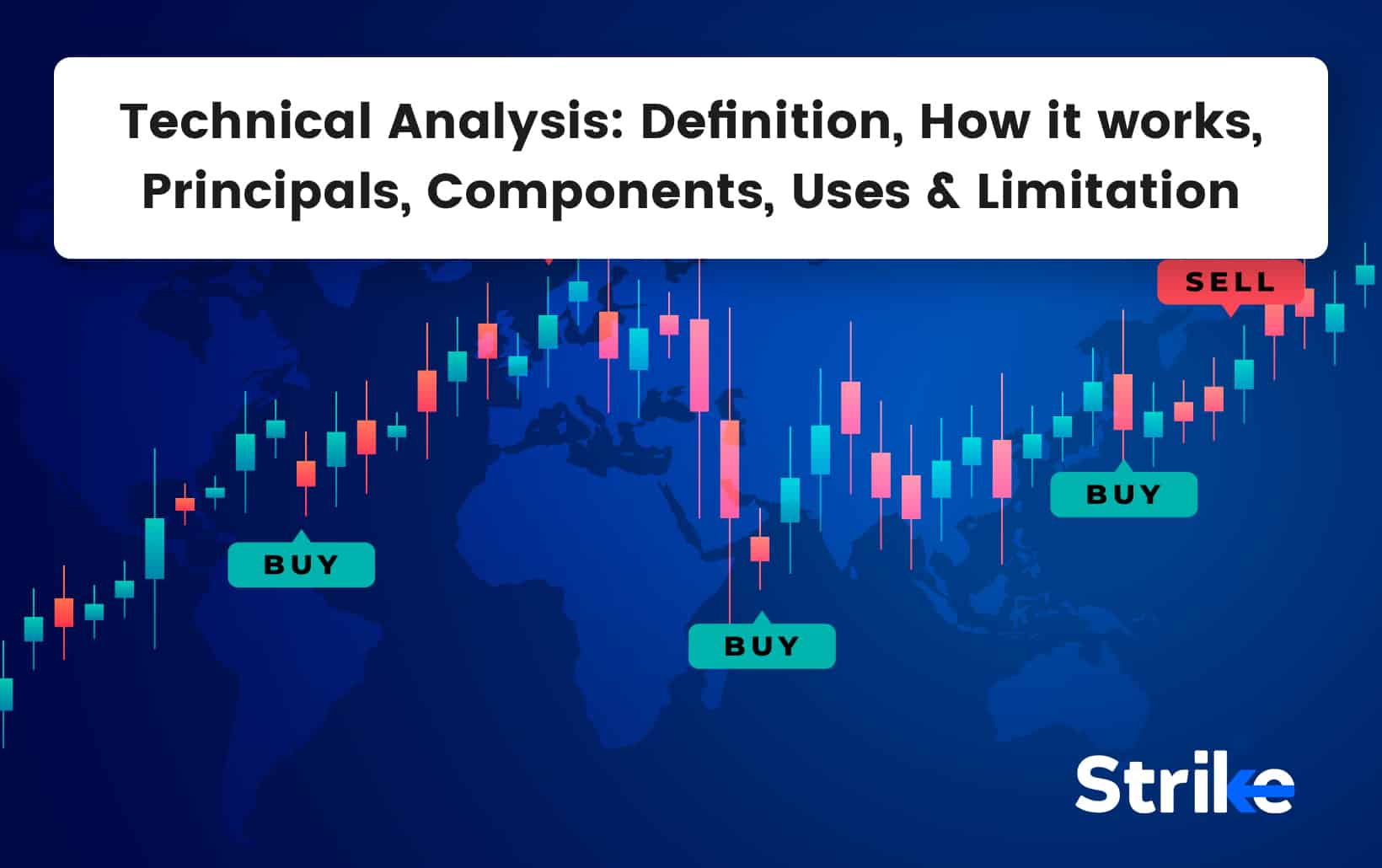
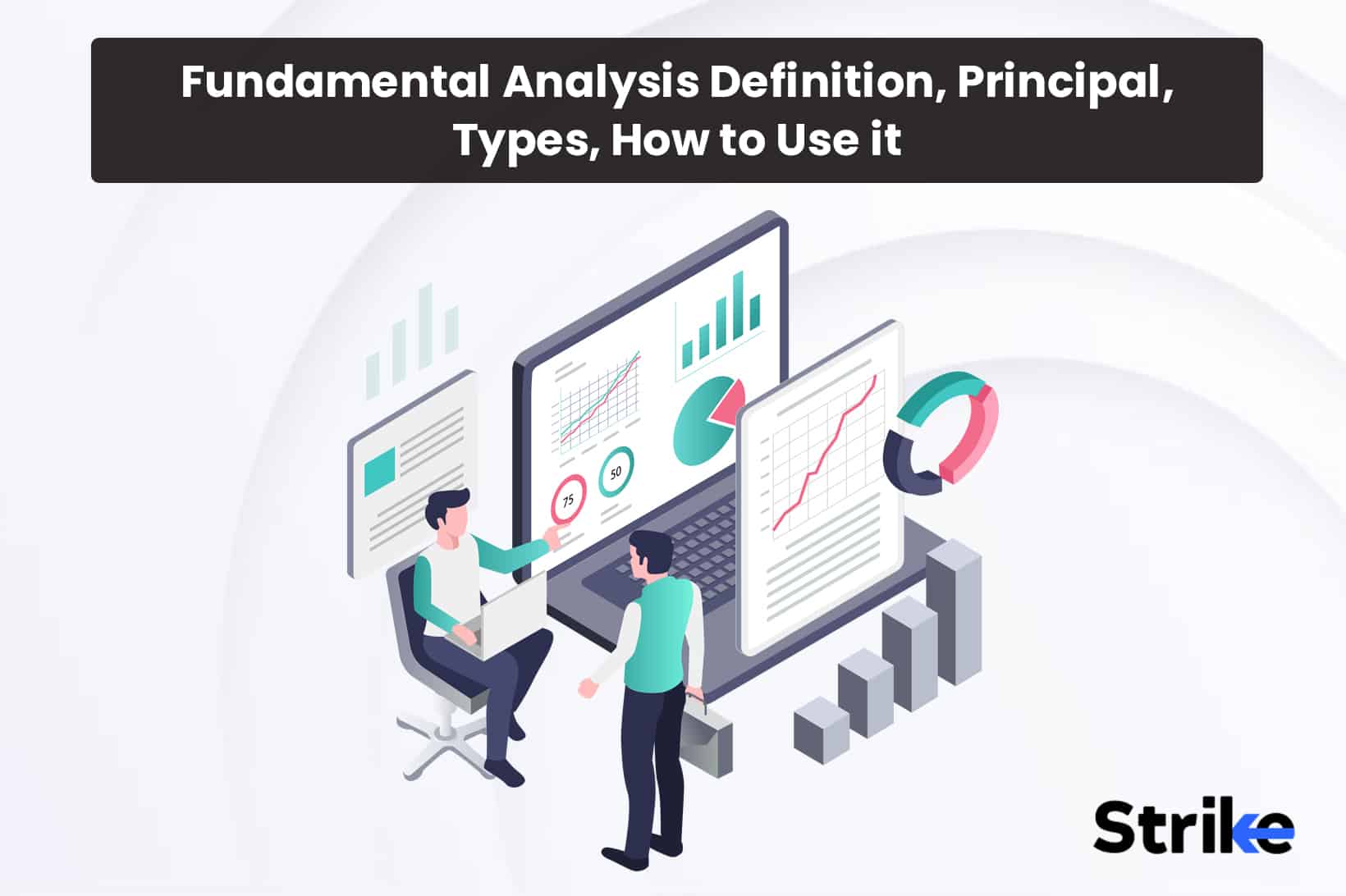
![85 Common Stock Market Terminologies for Dummies [Updated List for 2025] 4 85 Common Stock Market Terminologies for Dummies [Updated List for 2025]](https://www.strike.money/wp-content/uploads/2025/04/Popular-Stock-Market-Terms-for-Beginners-Banner.png)






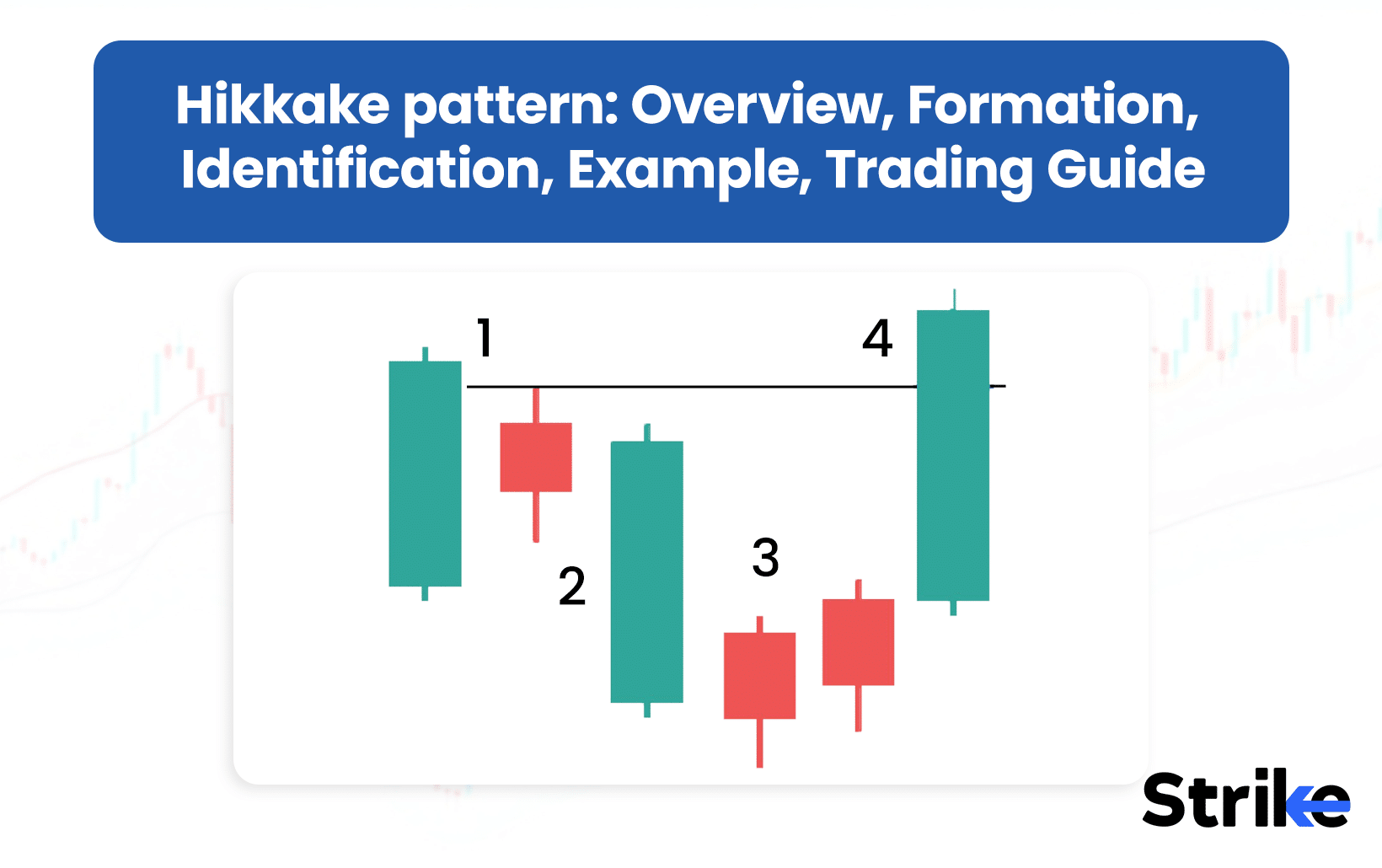
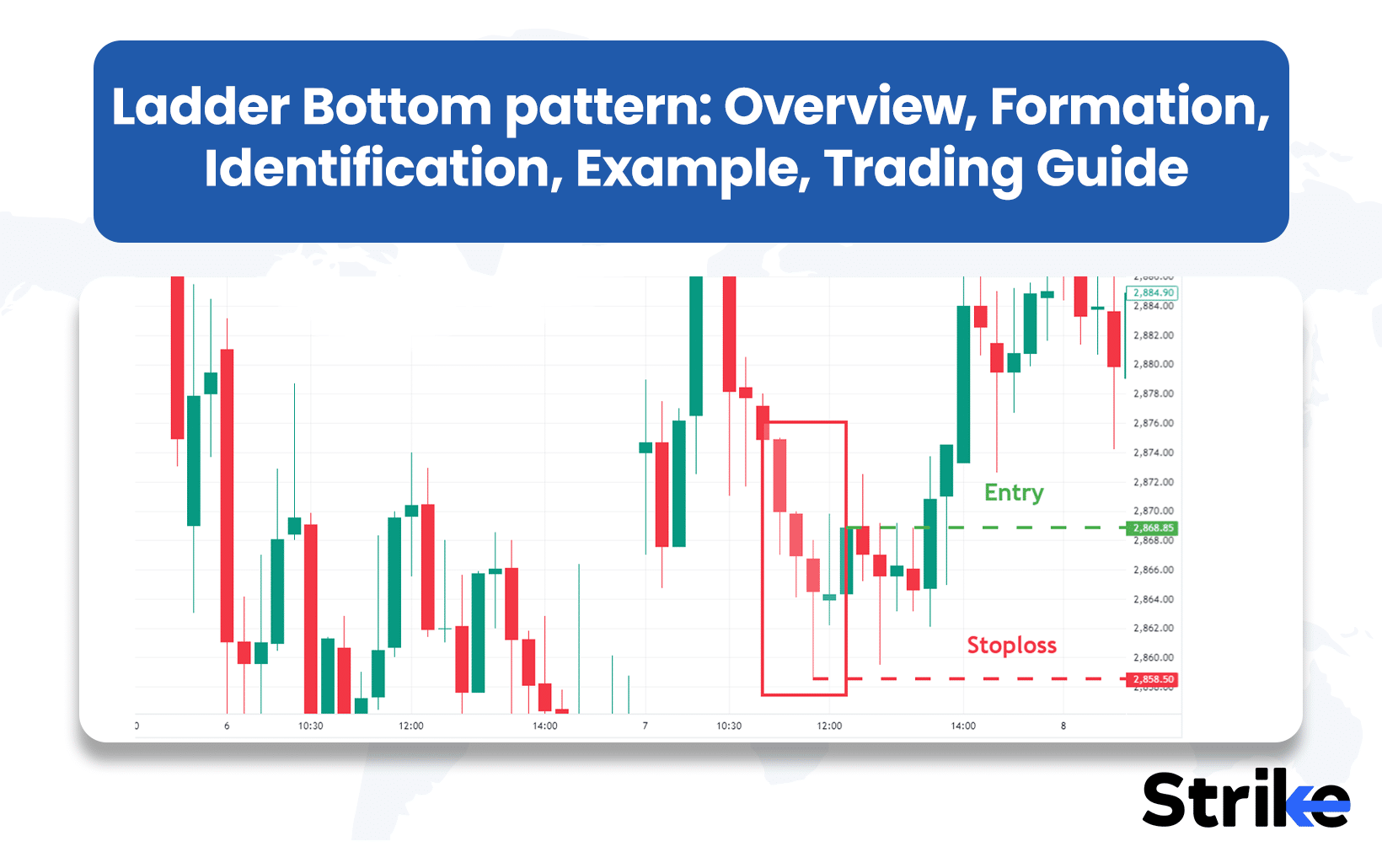



No Comments Yet.